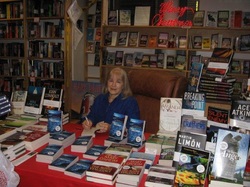For a writer, there’s something compelling about a crime that’s never been solved, a case that’s still out there waiting for a solution. Since I write fiction, I can resolve the plot myself. Or at least use those old crimes to add mystery to my own writing.
Take the case of the Zodiac Killer. I’m working on a Jeri Howard book, called The Things We Keep. As things are wont to do when you write mystery fiction, a real-life case collides with Jeri’s fictional investigation.
Type “Zodiac Killer” into your search engine and you’ll get millions of hits.
Seven known victims, two of whom survived, are attributed to the Zodiac. The murders occurred between December 1968 and October, 1969. Surviving witnesses described the killer as a man in his 30s.
I say known victims, because there are other murders and disappearances attributed to Zodiac, some going back as far as the early 1960s, others in the early 1970s. However, evidence of his involvement in these murders is sketchy and inconclusive.
The killer sent letters to Bay Area newspaper, taunting the police. Some of the letters included cryptograms. One was solved in 1969. One was solved just last year, after 51 years.
After December 1969, communications from Zodiac were sporadic and sometimes considered spurious. Did the killer stop killing, go somewhere else, or die? The police had a suspect but not enough evidence to charge anyone. That person died in 1992.
The case is still open in San Francisco, as well as the other locations where the Zodiac struck. And the California Department of Justice file is also open.
Robert Graysmith’s book Zodiac, the source of the 2007 movie of the same name, is considered the definitive account of the investigations into the murders.
I’m not going to solve this particular puzzle in my novel, but the Zodiac Killer is certainly a looming presence in Jeri’s fictional case.
There’s another unsolved mystery that has fascinated me for decades. From the same era, as it happens.
On March 18, 1969, Thomas Riha vanished. An immigrant from Czechoslovakia, he was an associate professor of Russian history at the University of Colorado in Boulder. He and his wife Hana were in the process of divorcing. She had recently fled their home, claiming that someone was trying to kill her. When Riha disappeared, the house was full of furniture and the table was set for breakfast.
The authorities supposedly received assurances that Riha was alive and that he’d left of his own accord. Some people claimed to have seen him in the early 1970s, in Czechoslovakia.
But no one really knows what happened to Thomas Riha, with the possible exception of the CIA, the FBI. And maybe a woman who called herself Galya Tannenbaum.
Galya spun many yarns, claiming to be a secret service agent. She also claimed to know where Riha was. She disposed of his house, car and statuary collection. She was also the beneficiary in the wills of two Denver residents. Both the decedents had died of potassium cyanide poisoning.
District attorneys in Denver and Boulder filed criminal charges against her for forgery. When they searched her Denver house, they found a pound of potassium cyanide—and Thomas Riha’s driver’s license and passport.
Galya had several other names, a prior criminal record for forgery and theft, and a long record of mental instability. In June 1970 a judge found her incompetent to stand trial. She was sent to the state hospital in Pueblo, Colorado.
Eight months later, on March 7, 1971, Galya Tannenbaum committed suicide, using potassium cyanide.
For a mystery writer, this is catnip.
I used a variation of the Riha case in my second Jeri Howard novel, Till The Old Men Die. In that book, a professor at Cal State is definitely dead and Jeri gets involved in finding out who killed him.
Of course, I had to have a mystery woman.
Writing that book scratched the itch, but not entirely. It wasn’t the Riha case, with its echoes of Cold War intrigue and the strange woman who used potassium cyanide. It wasn’t the novel I wanted to write at the time. Real life is messy and sometimes it doesn’t have endings, as a good mystery novel should.
The itch is still there. Thomas Riha and the case of the vanishing professor will figure into a novel sometime in my writing future. I’ve already got a plot in mind!











